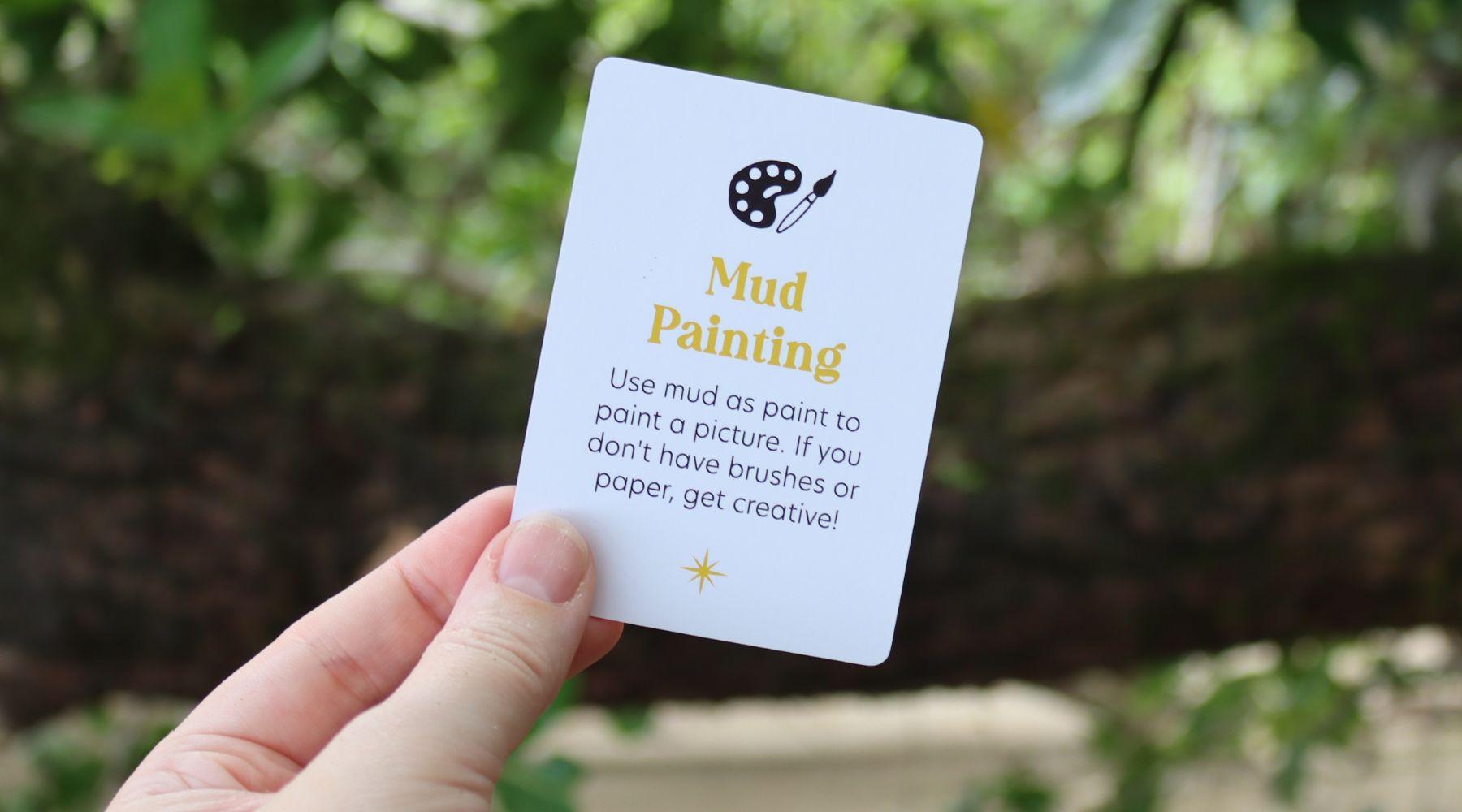Who says you need fancy paints and brushes to create a masterpiece? With just a bit of mud and your imagination, you can make amazing art right from the ground beneath your feet! Mud painting is a fun and messy way to get creative outdoors while learning about natural materials.
Why Try Mud Painting?
Mud painting lets you explore your artistic side using the resources you find in nature. It’s a great way to experiment with textures, colours, and patterns while also learning how to see the beauty in simple things. Plus, it’s eco-friendly—no need to buy supplies, just use what you find around you!
What You’ll Need
- Mud: Soft, smooth mud works best for painting. You can find mud in your backyard, a park, or any outdoor area after it rains.
- Sticks, leaves, or grass: Use these as natural paintbrushes.
- Rocks or tree bark: If you don’t have paper, you can paint on flat surfaces like rocks or pieces of bark.
Fun Fact: Mud can be different colours depending on the type of soil. For example, clay-rich mud might be reddish, while sandy mud can be light brown.
Step-by-Step Instructions
- Find the Perfect Mud Look for a spot where the soil is wet and easy to scoop. If it hasn’t rained recently, you can make your own mud by adding a little water to some dirt. Stir it up until it’s smooth and ready to use.
Fun Fact: Soil contains tiny particles of minerals and organic matter, which give it its colour and texture. The more organic matter, the darker the mud!
- Choose Your Canvas Decide what you want to paint on. A flat rock or piece of tree bark makes a great natural canvas. If you prefer, you can also use paper or cardboard, but part of the fun is finding something in nature to paint on!
- Make Your Paintbrushes Gather sticks, leaves, or even bundles of grass to use as paintbrushes. Experiment with different materials to see what kinds of marks they make. Each one will create a different effect!
- Start Painting! Dip your natural paintbrush into the mud and start creating! You can paint a picture, make patterns, or just have fun experimenting with shapes and textures. If you’re using different kinds of mud, you might even be able to create a multicoloured masterpiece.
Tip: If the mud is too thick, add a little more water to thin it out. If it’s too runny, mix in some more dirt until it’s just right.
- Let It Dry Once you’re happy with your painting, leave it in a safe spot to dry. Depending on the weather, it could take a few hours or overnight. When it’s dry, your mud artwork will have a cool, earthy look!
Cleanup Tips
- Wash your hands and any tools you use with soap and water.
- If you painted on rocks or bark, leave your artwork outside to return to nature when you’re done enjoying it.
Wrapping Up Your Mud Painting Adventure
Mud painting is a creative and fun way to connect with nature and make art at the same time. By using natural materials, you’re also learning about the environment and how to work with what’s around you. So next time you see a muddy spot, don’t just walk past—grab a stick and start painting your own earthy masterpiece!



